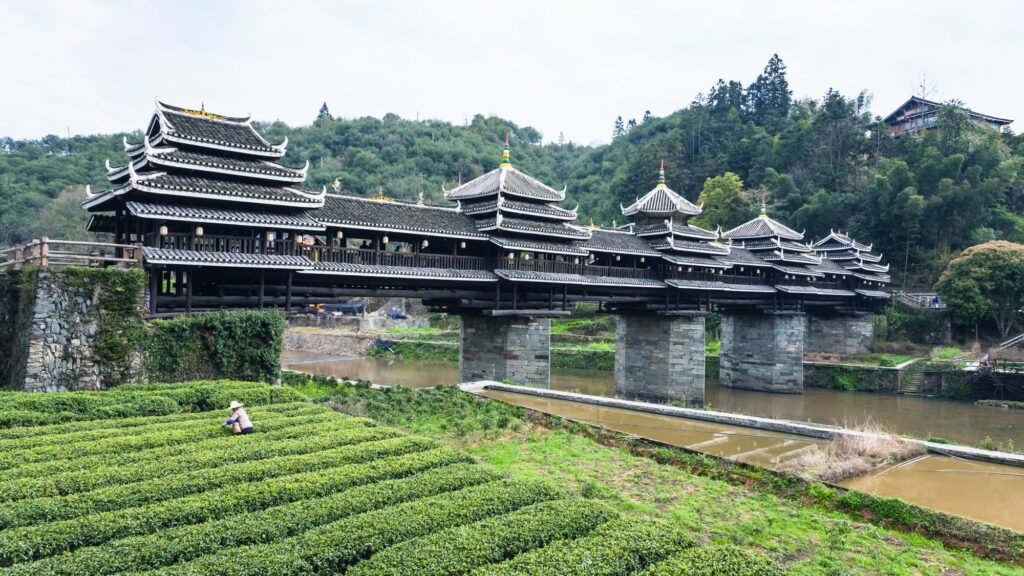
China is a land of rich cultural heritage, and one of its most renowned and celebrated legacies is its vast and diverse tea regions. From the rolling hills of Yunnan to the misty mountains of Fujian, China’s tea country is a tapestry of flavors, aromas, and traditions that have captivated tea enthusiasts the world over.
Introduction to China’s Tea Regions
China is home to some of the oldest and most revered tea-growing regions in the world. With a history spanning thousands of years, the cultivation and consumption of tea have become deeply woven into the fabric of Chinese culture. Each region boasts its own unique microclimates, soil compositions, and cultivation methods, resulting in a remarkable diversity of tea varieties and flavor profiles.
Famous Tea Regions in China
- Yunnan: Known for its rich, full-bodied Pu-erh teas, Yunnan is considered the birthplace of tea. The region’s high-altitude, subtropical climate and ancient tea trees produce some of the most sought-after and complex teas in the world.
- Fujian: The coastal province of Fujian is home to several renowned tea regions, including Wuyi Mountain and Anxi. These areas are famous for their production of delicate, aromatic oolong teas, as well as the iconic Tie Guan Yin variety.
- Zhejiang: Nestled along the eastern coast, Zhejiang is renowned for its production of high-quality green teas, such as the renowned Longjing (Dragon Well) and Anji Baicha varieties.
- Anhui: The inland province of Anhui is renowned for its Huangshan Maofeng and Keemun black teas, both of which are prized for their complex flavors and subtle nuances.
- Sichuan: While better known for its spicy cuisine, Sichuan is also home to several unique tea regions, including Emei Mountain, which produces the sought-after Bi Luo Chun green tea.
History and Significance of China’s Tea Regions

The history of tea cultivation in China dates back thousands of years, with the earliest written records of tea production dating back to the Han Dynasty (206 BC – 220 AD). Over the centuries, the art of tea-making has evolved, with each region developing its own distinct techniques and traditions. These tea regions have not only shaped the global tea industry but have also become integral to the cultural identity of the Chinese people.
Cultural Aspects of Tea in China
Tea is more than just a beverage in China; it is a way of life. The rituals and ceremonies surrounding tea consumption are deeply rooted in Chinese philosophy, art, and social customs. From the intricate tea ceremonies of the Gongfu Cha tradition to the reverence for specific tea cultivars, tea is woven into the very fabric of Chinese culture.
Types of Tea Grown in China’s Tea Regions
China’s tea regions are renowned for their production of a wide variety of tea types, each with its own unique characteristics:
- Green Tea: Produced primarily in regions like Zhejiang, Anhui, and Sichuan, Chinese green teas are known for their delicate, grassy, and sometimes nutty flavors.
- Oolong Tea: Originating from the Fujian province, oolong teas are partially oxidized, resulting in a complex flavor profile that ranges from floral and fruity to roasted and nutty.
- Black Tea: Regions like Anhui and Sichuan are renowned for their production of robust, full-bodied black teas, such as the famous Keemun and Lapsang Souchong varieties.
- White Tea: The Fujian province is also home to the production of delicate, minimally processed white teas, such as the renowned Bai Hao Yin Zhen.
- Pu-erh Tea: Originating from the Yunnan province, Pu-erh teas are unique in that they undergo a process of fermentation, resulting in a rich, earthy, and often complex flavor profile.
The Process of Tea Cultivation in China
The cultivation of tea in China is a highly specialized and labor-intensive process. Each region has developed its own unique methods, from the selection of tea cultivars to the harvesting and processing techniques. The skilled tea farmers of China carefully monitor the growing conditions, harvest the leaves at the optimal time, and employ traditional methods to transform the raw material into the exquisite teas that are celebrated worldwide.
Unique Characteristics of Each Tea Region
While China’s tea regions share a common heritage, each one offers a distinct and captivating experience for the tea enthusiast. Yunnan’s Pu-erh teas are renowned for their depth and complexity, while Fujian’s oolongs are prized for their delicate floral and fruity notes. The green teas of Zhejiang and Anhui are celebrated for their refreshing and nuanced flavors, and Sichuan’s teas offer a unique interplay of earthy and herbaceous notes.
How to Visit and Experience China’s Tea Regions
Exploring China’s tea regions is a truly immersive and enriching experience. Visitors can engage in tea-tasting sessions, observe traditional tea-making demonstrations, and even participate in authentic tea ceremonies. Many tea estates and plantations welcome guests, allowing them to witness the entire tea-making process firsthand and gain a deeper appreciation for the art of tea cultivation.
Traditional Tea Ceremonies in China

The art of tea ceremony in China is a profound and intricate tradition that has been passed down for generations. From the meticulous preparation of the tea leaves to the precise movements of the tea master, these ceremonies are not just about the consumption of tea but rather a celebration of the rich cultural heritage and spiritual significance of this revered beverage.
The Allure and Magic of China’s Tea Regions
China’s tea regions are a testament to the country’s enduring love affair with this remarkable beverage. From the rolling hills of Yunnan to the misty mountains of Fujian, each region offers a unique and captivating story, inviting tea enthusiasts to embark on a journey of discovery and delight. By exploring the rich history, diverse flavors, and cultural traditions that define China’s tea country, one can truly appreciate the enchanting allure and magic that make these regions so special.






